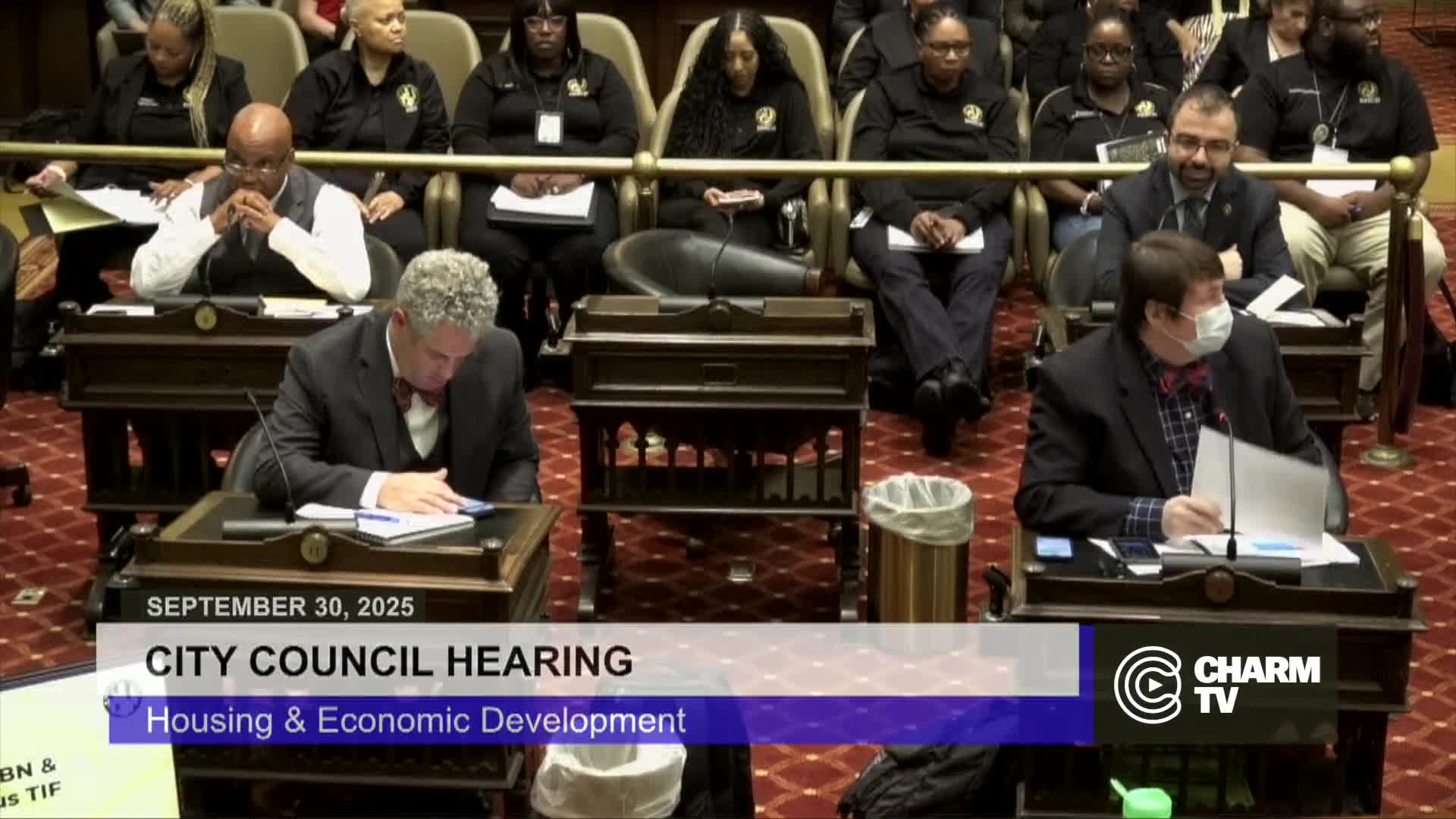Baltimore Launches First Noncontiguous TIF to Address Affordability Gaps
October 01, 2025 | Baltimore City, Baltimore County, Maryland
This article was created by AI summarizing key points discussed. AI makes mistakes, so for full details and context, please refer to the video of the full meeting. Please report any errors so we can fix them. Report an error »

In the heart of Baltimore's City Hall, a pivotal discussion unfolded as the Housing and Economic Development Committee convened on September 30, 2025. The atmosphere buzzed with anticipation as city officials outlined a groundbreaking initiative: the introduction of a non-contiguous Tax Increment Financing (TIF) program, a first of its kind in the nation.
Director Moxon kicked off the meeting by detailing the ambitious financial framework supporting this initiative. Over the next 15 years, the state has committed a staggering $900 million, with the TIF contributing $150 million from the city's own $300 million commitment. This funding is designed to revitalize neighborhoods and stimulate economic growth, particularly in areas where affordability is a pressing concern.
The TIF program aims to address the city's appraisal gap and enhance housing affordability for residents earning between 60% to 80% of the area median income. Unlike traditional TIFs that often favor a select few developers, this program is designed to benefit a broader spectrum of the community, ensuring that funds are allocated equitably across various neighborhoods.
As the meeting progressed, officials highlighted the extensive planning that has gone into this initiative. The TIF district encompasses over 8,500 properties, with more than 4,300 identified as potential beneficiaries of TIF funds. This expansive reach is intended to maximize the impact of the funding, ensuring that it flows into the neighborhoods that need it most.
The committee also discussed the rigorous compliance measures associated with TIF bonds, emphasizing the importance of adhering to federal tax codes. These bonds are tax-exempt, and the city must ensure that a significant portion of the proceeds is spent within a specified timeframe to maintain eligibility.
With the application portal for funding officially opened on September 19, city officials are eager to engage the community. They have already hosted three public information sessions, attracting over 1,400 attendees, and have reached out directly to property owners to encourage participation in this transformative program.
As the meeting concluded, the sense of urgency was palpable. With applications due on October 3, city leaders are poised to move forward, ensuring that the funds become available by early 2026. This initiative represents not just a financial investment but a commitment to fostering a more inclusive and economically vibrant Baltimore, setting a precedent for cities across the nation.
Director Moxon kicked off the meeting by detailing the ambitious financial framework supporting this initiative. Over the next 15 years, the state has committed a staggering $900 million, with the TIF contributing $150 million from the city's own $300 million commitment. This funding is designed to revitalize neighborhoods and stimulate economic growth, particularly in areas where affordability is a pressing concern.
The TIF program aims to address the city's appraisal gap and enhance housing affordability for residents earning between 60% to 80% of the area median income. Unlike traditional TIFs that often favor a select few developers, this program is designed to benefit a broader spectrum of the community, ensuring that funds are allocated equitably across various neighborhoods.
As the meeting progressed, officials highlighted the extensive planning that has gone into this initiative. The TIF district encompasses over 8,500 properties, with more than 4,300 identified as potential beneficiaries of TIF funds. This expansive reach is intended to maximize the impact of the funding, ensuring that it flows into the neighborhoods that need it most.
The committee also discussed the rigorous compliance measures associated with TIF bonds, emphasizing the importance of adhering to federal tax codes. These bonds are tax-exempt, and the city must ensure that a significant portion of the proceeds is spent within a specified timeframe to maintain eligibility.
With the application portal for funding officially opened on September 19, city officials are eager to engage the community. They have already hosted three public information sessions, attracting over 1,400 attendees, and have reached out directly to property owners to encourage participation in this transformative program.
As the meeting concluded, the sense of urgency was palpable. With applications due on October 3, city leaders are poised to move forward, ensuring that the funds become available by early 2026. This initiative represents not just a financial investment but a commitment to fostering a more inclusive and economically vibrant Baltimore, setting a precedent for cities across the nation.
View full meeting
This article is based on a recent meeting—watch the full video and explore the complete transcript for deeper insights into the discussion.
View full meeting
